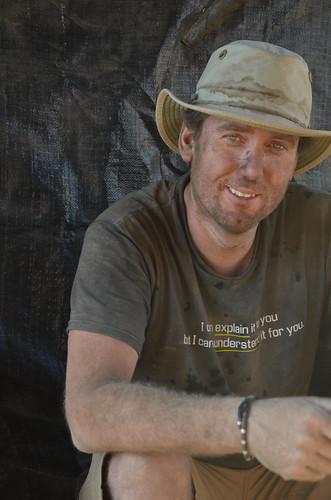28th April 2014 Lima, Peru
Pachacamac – a hidden world reveals its secrets

Guest blog by Dr Lawrence Owens
- Dr Lawrence Owens is sessional lecturer in bioarchaeology at Birkbeck College, University of London. He has been involved in bioarchaeological projects for over 20 years, and currently works in Peru, Qatar and Egypt. His co-edited volume – entitled Funerary Patterns and Models in the Ancient Andes: the Return of the Living Dead – will be released later in 2014 by Cambridge University Press.
Agatha Christie famously said of her husband, Sir Max Mallowan, that an archaeologist is the best husband any woman can have: the older she gets, the more interested he is in her. And while Agatha herself has never particularly appealed to me, the nuts and bolts of what I do continue to transfix and fascinate me every day.
Unlike ‘normal’ archaeologists, who may be tied to a particular period or place, I am a bioarchaeologist. This means that I can – and do – work wherever there are human bones, a subject I chose because there is something magical about the way it can address the sheer universality of the human experience in a way that more traditional methods of archaeology cannot. It is astonishing, at the end of the day, how similar we are and have always been. The way we are under the skin is the real stuff of history. Our bones are almost incapable of artifice, and they betray everything about us. Despite what you may think, there is nothing morbid in what they leave behind: it is a full book of life, and all we have to do is learn how to read it.
Ever since I was a child I have been fascinated with Peru, and my inner five-year-old is still incredulous that I have the opportunity to work in one of archaeology’s holy grails. I have been coming here for a decade now, and I continue to be blown away by everything from the extraordinary kindness of the people to the world-beating archaeology. I am particularly struck by it each time I return to my Peruvian ‘home’, the site of Pachacamac where the Ychsma project (headed by a Belgian team from the Université Libre de Bruxelles) has been working since the mid 1990s.
First excavated by Max Uhle – a German gentleman of vast intellect and even vaster moustaches – Pachacamac is the Daddy of Andean archaeological sites. There are a thousand years’ worth of temples still standing, and under the surface there are probably more than 80,000 burials, slumbering silently under the dry dust, dressed in macaw feathers and fine textiles, surrounded by their pots and possessions, awaiting their return to the sun and for us to arrive and tell their stories. And tell them we shall. This season we have been excavating a new ‘painted temple’ covered with polychrome murals. It is filled with remarkable items that come from across the Andean area, from Ecuadorian Spondylus shells to exotic feathers, metals, wooden cups encrusted with fine inlays and much else besides. Among these are various burials, often in unusual ‘deviant’ burial formats – such as under floors, in strange positions and so forth – that promise to tell us a great deal more about these people and what their lives were like.
It is of course an enormous privilege to be able to work on such fascinating and informative emissaries from the past, and it is doubly satisfying to be able to do so with the assistance and enthusiasm of the students we recruit from all the major Peruvian universities. We train them in everything from conservation to human bone analysis, and bring the best of new methods and techniques to bear on the flow of valuable data we are getting from the site.
Can I invite you to keep in touch with our work and publications? There is no official blog for the project, but if you search for the site’s name, ‘Ychsma project’, my name and that of Dr Peter Eeckhout you will be able to keep abreast of our work. It is an important project – it genuinely matters. As we probe deeper into ancient lives on the Peruvian coast, we now not only learn more about these people’s height and weight, their origin and appearance, but also factors like how they adapted and reacted to the El Niño phenomenon, which has never been done here before. As the endlessly quotable Winston Churchill once said, the farther backward you can look, the farther forward you are likely to see. I hope that our efforts will help us all to see a little more clearly.